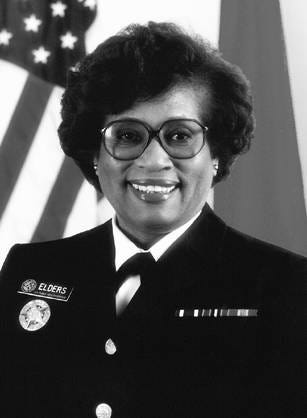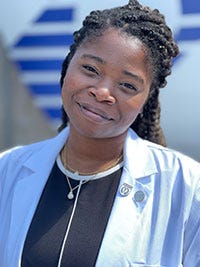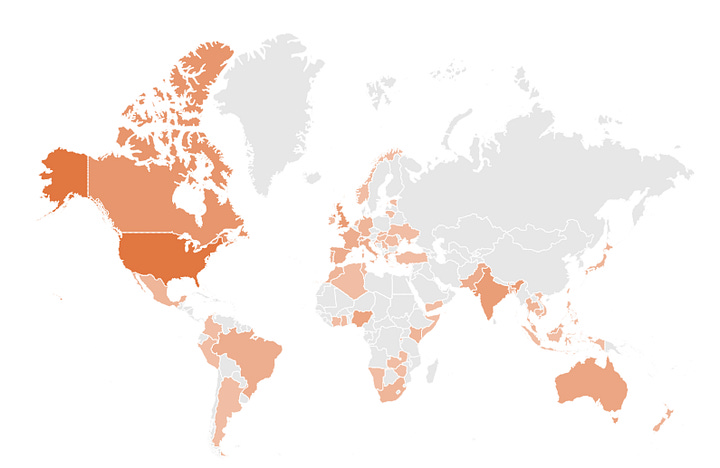What are you thinking?
From poetry to memoir, these five works capture what it is to be a healer.

A patient who experienced a significant side effect from prostate surgery recently asked me “What was he thinking?”
The “he” referred to his urologist whom the patient felt had blown off his concerns at a recent follow up visit. Rather than listening, my patient told me, the doctor “threw a paper at me while walking out the door” and told him he needed to discuss radiation with me.
Getting into the minds of other humans, particularly physicians, is a fruitless task in my experience. Most often the story I create is wrong and doesn’t really help the patient sitting in front of me. I also understand “I don’t know” is not a satisfying answer to most patient questions.
I suspect, however, that he was not really interested in what his doctor was thinking. Instead, he wanted reassurance that the physician he entrusted to assault his body with a knife wielding robot cared about him and that he, the patient, made the right decision on the surgeon and procedure.
In this case, the complication was not unexpected and possibly could be improved. We discussed a referral to pelvic floor rehab which he accepted. I also referred him to a group led by our hospital chaplain that meets at the local YMCA to discuss similar experiences. I did not answer his question, but I hope I addressed his concerns.
The New York Times bestseller, How Doctor’s Think, explains how physicians approach the work from the perspective of a cis, white, male tenured Harvard professor. To figure out what we are thinking, however, I prefer these more intimate stories. I hope you do too.
This is Going to Hurt: Secret Diaries of a Junior Doctor
Picador, 2017
Dr. Adam Kay’s modern take (think House meets Scrubs) explores the horror, humor, and humiliation of physician training. Set in the UK’s National Health System, this Sunday Times bestseller sold over 3 million copies in 37 languages and was turned into a TV drama now available on Amazon Prime.
Talking to medical students, the doctor turned comedian describes his job this way: “I told them the truth: the hours are terrible, the pay is terrible, the conditions are terrible; you’re underappreciated, unsupported, disrespected and frequently physically endangered. But there’s no better job in the world.”
Kay’s dark humor while caring for women as an OB/GYN (He refers to it as the “twats and brats” service) also provides a glimpse of misogyny dressed as sarcasm that is unfortunately still present in medicine today.
The Assumptions Doctors Make
The New Yorker. March 9,2023

What is causing dementia and incontinence in a young woman who otherwise seems healthy? Her concerned husband brought her to the ER to find out.
In this powerful essay, Dr. Ricardo Nuila brings us to the bedside of a Spanish speaking diabetic patient at Ben Taub Hospital in Houston, Texas where he has cared for the uninsured for over 25 years. This story of our broken health care system and the professionals who prevent vulnerable patients from falling through the cracks will break your heart and open your eyes.
If you enjoy this read, Dr. Nuila’s book, The People’s Hospital, explores how doctors (and patients) navigate the mayhem and inequities of American medical care. I want every doctor to care as much as he does.
Twice As Hard: The Stories of Black Women Who Fought to Become Physicians, from the Civil War to the 21st Century
Beacon Press, 2023



Dr. Rebecca Crumpler, the first black female physician, graduated from medical school 14 months after President Lincoln signed the Emancipation Proclamation. Over a century later, President Bill Clinton appointed the first black female, Dr. Jocelyn Elders, to serve as US Surgeon General.
Just as remarkable as the previously untold history of these trailblazing physicians is the fact that the author wrote this while in medical school. Jasmine Brown is a talented writer who brings the stories of these forgotten heroes to life.
Drawing Blood
Bellevue Literary Review, Issue 34, 2018

I completely missed World’s AIDS Day on December 1. Like me, many have forgotten the terrifying early days of the AIDS epidemic when a diagnosis meant death. Dr. Laura Johnsrude clearly has not.
The eyes of her pediatric patients and their caregivers still haunt her: “The difficult part was before the needlestick, looking into the mother’s exhausted face while describing how I would be inserting a catheter and covering it with a Styrofoam cup cut in half, taping it to the scalp. Sometimes we had to shave a bit of hair. The mother’s eyes always widened with horror and disbelief.”
This essay, an Honorable Mention for the magazine’s annual writing contest, places us in the smallest of spaces between needle and vein, healer and child.
Tools of The Trade: Poems for New Doctors
Birlinn Press
Now in its fourth edition, this collection of poems is a collaboration between the School of Medicine at the University of Saint Andrews and the Scottish Poetry Library. Each piece connects the experience of a physician or medical student to the wider human experience of illness and the collection is given to every graduating physician.
This review said it best: “The stethoscope in your pocket helps you listen to the patient’s heart. Keep this anthology close at hand to remind you to listen to your own.”
Do you know what your doctor is thinking? I’d love to hear in the comments below.
On my mind…
Cancer Culture is read in 45 states and 63 countries. How cool is that?!
Thank you to everyone who has shared Cancer Culture and recommends this community to others! Please continue to spread the word and invite others to join the conversation!


Comments





Thank you for this post. Health inequity, injustice and misogyny in the healthcare system are rampant worldwide. I think we're slowly uncovering it and trying to gradually change for the better although we're far from actualizing it.